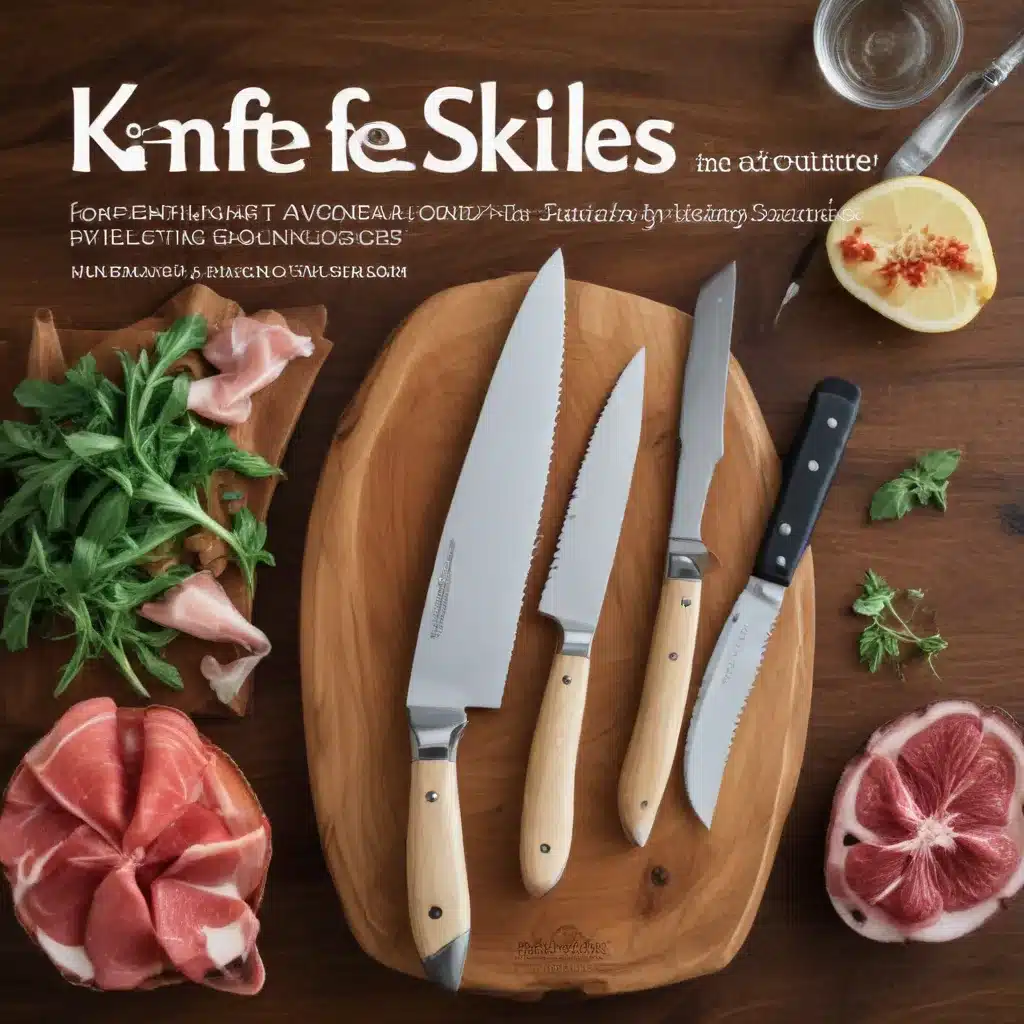
Elevating Your Culinary Creations with Precision Trimming
As a seasoned culinary professional, I’m thrilled to share with you the art of precision trimming and advanced knife skills that can truly elevate your cooking. Whether you’re a seasoned home cook or an aspiring chef, mastering the techniques of filleting, butterflying, and deboning can transform your dishes from ordinary to extraordinary.
In the culinary world, the knife is an extension of the chef’s hand, wielded with grace, precision, and purpose. Proper knife skills not only enhance the visual appeal of your creations but also have a significant impact on the flavor and texture of the final dish. In this comprehensive guide, we’ll delve into the world of trimming, exploring the essential tools and techniques that will enable you to sculpt your ingredients with finesse.
Mastering the Art of Trimming Knives
At the heart of every exceptional trimming technique lie the right tools for the job. Let’s take a closer look at the key players in the trimming arsenal:
Boning Knife: Slim, supple, and oh-so-versatile, the boning knife is the ballerina of the kitchen. With its agile and narrow blade, it’s the perfect tool for navigating bones and joints, allowing you to remove meat from the bone with ease and precision.
Trimming Knife: The unassuming hero of the kitchen, the trimming knife boasts a robust construction and a gently curved blade. This workhorse is ideal for removing skin, cartilage, and excess fat, ensuring your ingredients are prepped to perfection.
Grip and Posture: Proper grip and posture are essential for achieving the perfect cut. Treat the knife as an extension of your hand, maintaining a firm yet comfortable grip. Keep your fingers away from the blade to avoid any missteps.
Transforming Meat with Trimming Techniques
Trimming is more than just removing excess fat and tissue; it’s an art form that can elevate the quality and tenderness of your ingredients. Let’s explore the essential techniques that will unlock your culinary potential:
Filleting and Deboning: Extracting bone-in cuts can be an intricate process, but with practice, you’ll master the art of filleting and deboning. Visualize the bone’s structure and glide the knife with finesse, skillfully separating the meat to create exquisite boneless pieces.
Butterflying: Butterflying is an excellent technique for larger items, such as roasts or fowl. By carefully splitting the meat, you can achieve a uniform thickness, ensuring even cooking throughout. Don’t forget to remove the silver skin, a thin, silvery membrane that can be tough and chewy.
Precision Trimming: As you hone your skills, precision trimming becomes crucial for creating specialty cuts that elevate your dishes to new heights. Refine your knife techniques to craft intricate and visually appealing cuts, transforming a simple meal into a work of art.
The Impact of Trimming on Flavor and Texture
Trimming meat doesn’t just affect the appearance of your dishes; it also has a profound impact on their flavor and texture. By skillfully removing excess fat and connective tissue, you can allow the authentic flavors to shine through, creating a clean and rich taste.
Additionally, trimming can help tenderize more challenging cuts, making them more succulent and enjoyable. Consistent thickness in your cuts ensures even cooking, preventing overcooked or undercooked portions and delivering a perfectly balanced dish.
Minimizing Waste and Maximizing Sustainability
In the culinary world, waste reduction is not just a buzzword; it’s a fundamental practice that separates great chefs from the rest. As you hone your trimming techniques, it’s crucial to minimize waste and showcase your commitment to sustainability.
Don’t discard those trimmed meat scraps! Instead, transform them into delectable creations, such as flavorful stocks, hearty stews, or mouth-watering ground meat for burgers or meatballs. By efficiently using every part of the meat, you can save costs, reduce environmental impact, and showcase your creativity.
Consider implementing sustainable practices in meat handling and disposal. Collaborate with local farmers or composting facilities to repurpose non-edible waste responsibly. Adopting eco-friendly packaging and mindful purchasing practices can further contribute to your sustainability efforts.
Precision Trimming for Sous Vide and Specialty Cuts
As your culinary journey progresses, precision trimming becomes increasingly important, especially when it comes to techniques like sous vide cooking. By removing excess fat and connective tissue, you’ll prevent uneven texture and enhance the tenderness of your sous vide dishes, allowing the flavors to infuse evenly.
Different recipes may also demand specific trimming techniques. Familiarize yourself with the unique requirements of each dish to deliver outstanding results every time. From preparing a whole chicken to handling a tenderloin, your attention to detail will be the key to creating culinary masterpieces.
Embrace the Challenge and Become a Trimming Maestro
Mastering advanced trimming techniques may seem daunting at first, but with patience and practice, you’ll soon become a trimming genius, wowing everyone with your culinary prowess. Don’t be afraid to try new things and learn from experienced chefs. Pay attention to tutorials, seek advice, and embrace the journey of perfecting your skills.
Remember, cutting your meat correctly can improve its flavor and texture, taking your meals to new heights. Adopting sustainable practices and minimizing waste also showcase your commitment to responsible cooking. With dedication, precision, and a dash of creativity, you’ll delight taste buds and impress diners with every perfectly trimmed masterpiece.
So, sharpen your blades, unleash your inner culinary adventurer, and let’s embark on a trimming odyssey that will forever transform your cooking. Bon appétit!


